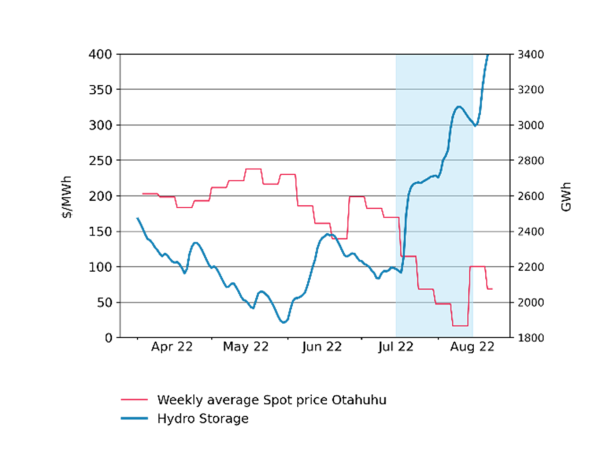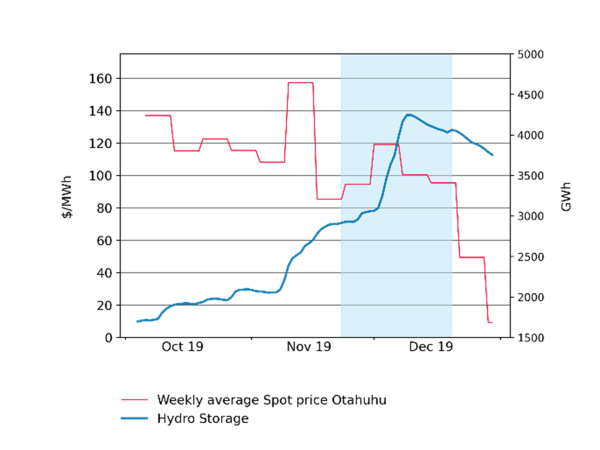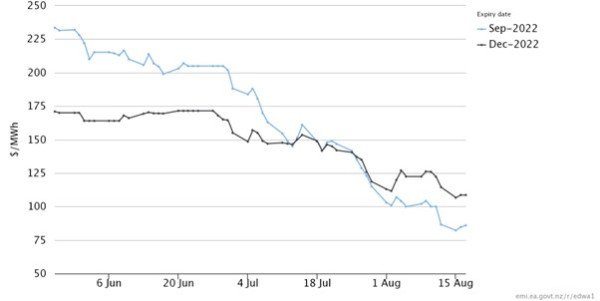Eye on electricity
Spot prices fall as hydro storage increases
- Generation
- Transmission
- Prices
The heavy rain that has lashed the country in recent times may have caused flooding and numerous slips in parts of the country but there has been one upside – storage in New Zealand’s hydro schemes has risen rapidly.
As of August 25, hydro storage was sitting at 77 per cent of the theoretical maximum storage – at 3400GWh up 28 per cent on the same time last year.
As the lakes levels have risen, prices on the spot market have fallen because of the abundance of available hydro generation as seen in Figure 1.

The decline in spot prices relative to the abundance of hydro storage contrasts with the events of December 2019 when spot prices remained elevated despite hydro storage increasing, as seen in Figure 2.

Following a year-long investigation after a claim made by seven claimants, the Authority decided there was an undesirable trading situation for the period between 3-27 December 2019 and reset prices for the period of the UTS to a level that was more consistent with the abundance of water available for generation.
The Authority introduced new trading conduct rules in June 2021 and is actively monitoring trading conduct behaviour.
The recent high inflows into hydro lakes as also impacted on the futures market with Forward Electricity Market prices falling for the remainder of 2022 as seen in Figure 3.

Related News
Seeking feedback on 11 July 2025 under-frequency event
The Electricity Authority Te Mana Hiko is seeking feedback from participants who may be substantially affected by the under-frequency event of 11 July 2025.
How marginal electricity spot pricing reflects cost
In the New Zealand wholesale electricity market, the price paid to dispatched generators is the nodal ‘spot price’, which is priced to reflect the ‘margina…
New monthly hedge market summary report
In the interests of transparency, and to help equip market participants, the Electricity Authority is keen to gather and share as much data about market and in…